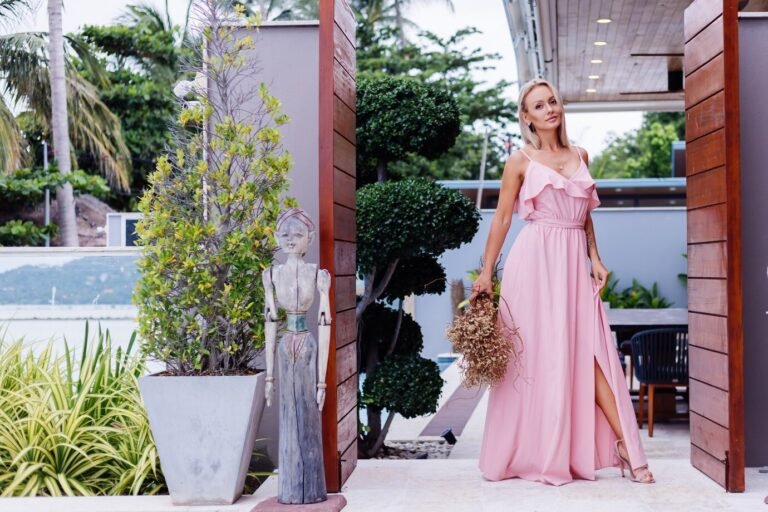
Introduction:
A pink dress holds a unique allure, effortlessly blending the delicate softness of the color with bold statements of style. Whether it’s a soft pastel for a light, breezy vibe or a deep, vibrant shade for a dramatic flair, the pink dress has earned its place in the fashion world. This article will explore the different aspects of the pink dress, from its history to styling tips and how it continues to be a timeless choice in wardrobes worldwide.
1. History of the Pink Dress
The pink dress has evolved through history, originally linked with femininity and innocence. However, its significance has changed dramatically over the years, moving from royal courts to street fashion. Once associated primarily with children, pink soon became a symbol of romanticism and grace in adult wardrobes. In the 20th century, designers like Christian Dior, Coco Chanel, and others began using the dress to make bold fashion statements, transforming it into a staple for modern elegance and sophistication. Today, pink no longer solely represents one specific meaning, but rather, it has become a versatile color in both high fashion and everyday wear.
2. Pink Dress for Different Occasions
One of the most appealing aspects of the pink dress is its versatility. The color lends itself well to a variety of occasions. A light pink or blush dress is perfect for a day event, a garden party, or a casual afternoon outing. Meanwhile, deeper shades of pink, such as magenta or fuchsia, are ideal for evening parties, weddings, or formal galas. Depending on the cut and fabric, pink dresses can also be worn in professional settings, though the more muted tones of pink may be preferred to maintain a polished and understated look. Whether you are dressing for a wedding, a business meeting, or a night out, the pink dress offers a broad range of styles suited to all events.
3. Styles and Trends in Pink Dresses
When it comes to styling, the pink dress offers endless possibilities. From flowy, A-line dresses to figure-hugging midi and maxi dresses, there for everyone. In recent years, the minimalist trend has seen simple, elegant pink dresses take center stage, often paired with delicate accessories. On the other hand, bold and extravagant designs featuring ruffles, tiered skirts, or voluminous sleeves have also been popular, embracing an almost fairy-tale-like aesthetic. Fashion-forward trends also blend other colors with pink, like pairing it with black, white, or even metallic hues to create a modern twist. The classic little dress has become a must-have for any wardrobe, as it seamlessly combines sophistication with playful charm.
4. How to Accessorize a Pink Dress
Accessorizing a pink dress requires a balance of complementing the color while also enhancing the overall look. For a soft and romantic vibe, consider silver or gold jewelry that adds a hint of sparkle without overwhelming the dress. Soft neutrals like nude or beige shoes are often the best choice for daytime events, while a pair of bold heels can add drama for a night out. For a more edgy look, consider pairing a pink dress with black accessories—like a black leather belt or a statement handbag. For daytime occasions, light pastel accessories can help soften the boldness of a deeper dress, while contrasting colors such as teal, navy, or even emerald green can make a striking statement at evening events.
5. The Psychological Effect of Wearing a Pink Dress
The color pink is often associated with positive emotions such as love, warmth, and happiness. Wearing a dress can evoke feelings of calm and serenity, while also radiating confidence and approachability. Many cultures associate pink with affection, and wearing this color can make individuals appear friendly, gentle, and more open. In contrast, bolder pinks, like magenta or hot pink, convey energy and assertiveness, signaling a person who is not afraid to stand out and be noticed. Therefore, the psychological impact of a pink dress can be a powerful tool in expressing one’s mood, confidence, and personality.
Conclusion:
The pink dress is more than just a fashion trend; it is a timeless piece that holds a special place in both historical and modern wardrobes. Its versatility makes it suitable for a wide variety of occasions, from casual to formal, and its adaptability allows it to be styled in numerous ways. Whether chosen for its softness, its statement-making power, or its symbolic meaning, the continues to be an enduring favorite in the fashion world. Embrace its charm, and you’ll be sure to turn heads and leave a lasting impression wherever you go.